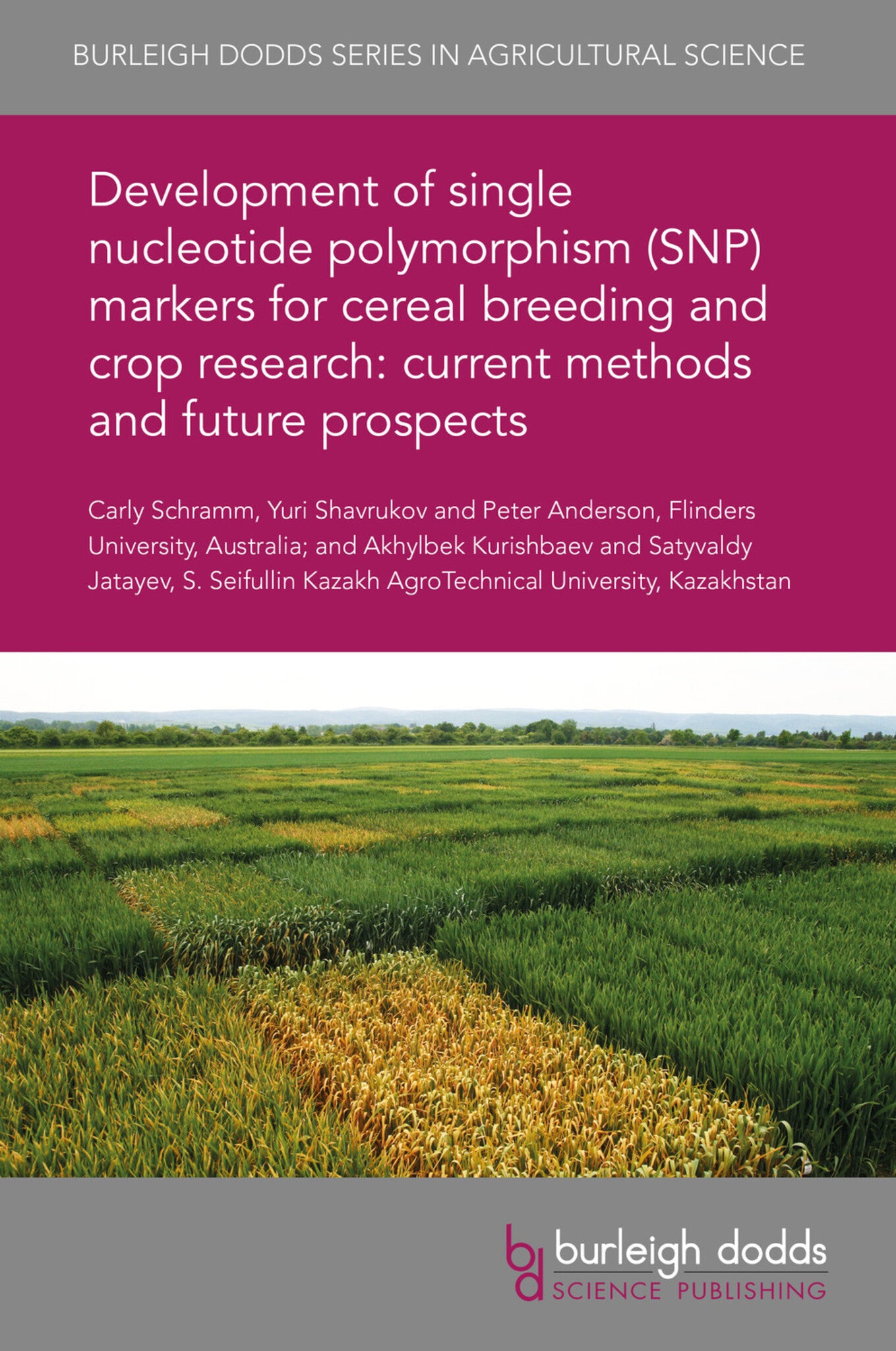We're sorry. An error has occurred
Please cancel or retry.
Development of single nucleotide polymorphism (SNP) markers for cereal breeding and crop research: current methods and future prospects
Dr carly schramm,
Dr yuri shavrukov,
Dr peter anderson,
Dr akhylbek kurishbaev,
Dr satyvaldy jatayev
Regular price
£25.00
Sale price
£25.00
Regular price
£25.00
Unit price
/
per
Sale
Sold out
Re-stocking soon
Modern cereal breeding and research increasingly relies upon the application of molecular genetics. This chapter provides an overview of the development of single nucleotide polymorphism (SNP) mark...
Read More

Some error occured while loading the Quick View. Please close the Quick View and try reloading the page.
Couldn't load pickup availability
- Format:
-
27 June 2019

Modern cereal breeding and research increasingly relies upon the application of molecular genetics. This chapter provides an overview of the development of single nucleotide polymorphism (SNP) markers for use in such breeding and research. Fluorescence detection methods are fully reviewed as this field is experiencing an explosion of interest among plant biologists and crop breeders. More than 20 modern fluorescence-based methods for SNP identification and discrimination are included and the specific advantages and disadvantages of each covered. This variety of approaches gives researchers and industry the freedom to adapt and improve upon existing methods and develop novel techniques to suit specific SNP analyses. The majority of the described SNP methods are already widely used in plant biology and crop breeding, whereas others are more popular in medical research yet have potential applications in plant research.

Price: £25.00
Publisher: Burleigh Dodds Science Publishing
Imprint: Burleigh Dodds Science Publishing
Series: Burleigh Dodds Series in Agricultural Science
Publication Date:
27 June 2019
ISBN: 9781838798314
Format: eBook
BISACs:
TECHNOLOGY & ENGINEERING / Agriculture / Sustainable Agriculture, Agronomy and crop production, TECHNOLOGY & ENGINEERING / Agriculture / Agronomy / Crop Science, Sustainable agriculture

1 Introduction 2 SNP applications and challenges 3 Array-based SNP genotyping and Genotyping-by-sequencing 4 Compatibility and accessibility 5 Specific methods for SNP detection and genotyping 6 SNP markers with and without Universal probes 7 Practical remarks and conclusion 8 Where to look for further information 9 Acknowledgements 10 References



